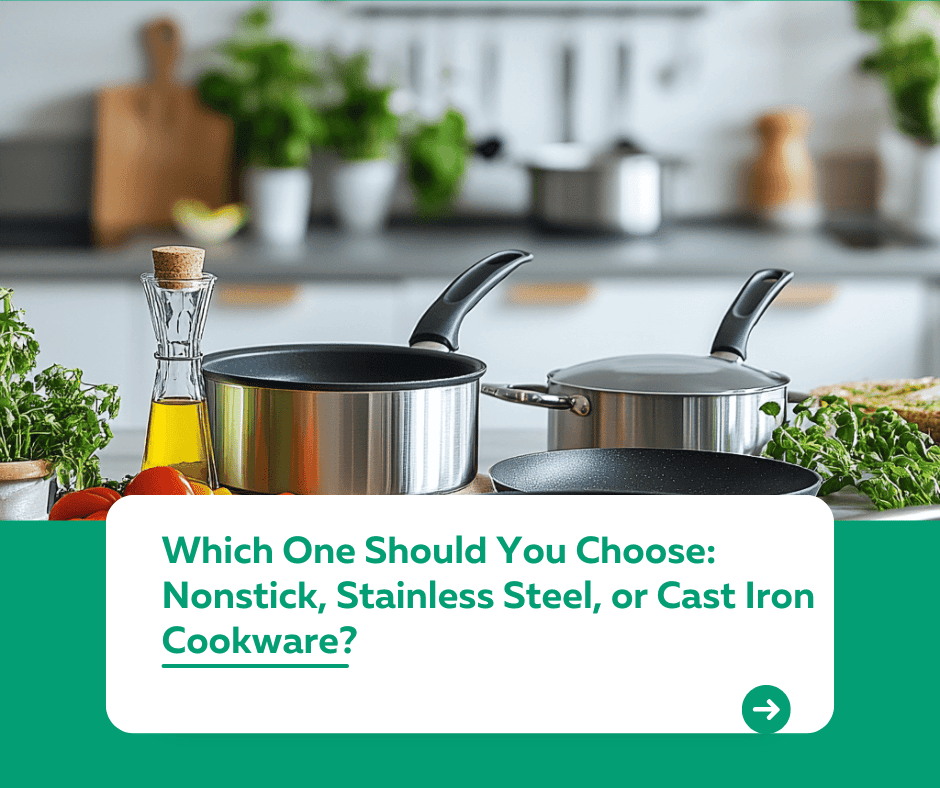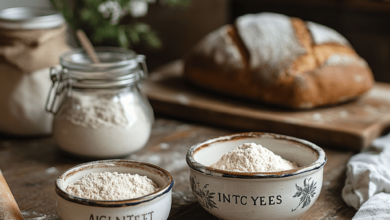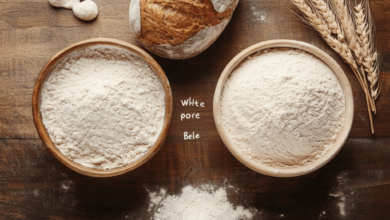Which One
Which One Should You Choose: Nonstick, Stainless Steel, or Cast Iron Cookware?

Introduction
The cookware you choose can make or break your cooking experience. Which one is better: nonstick, stainless steel, or cast iron? Each has its pros and cons, and understanding these will help you pick the perfect option for your kitchen.
1. Nonstick Cookware
1.1 Benefits
- Ease of Use: Great for beginners, as food doesn’t stick.
- Low-Fat Cooking: Requires less oil or butter.
- Easy Cleaning: Wipe down with minimal scrubbing.
1.2 Drawbacks
- Durability: The nonstick coating can wear off over time.
- High Heat Limitations: Not suitable for searing or broiling.
- Utensil Restrictions: Metal utensils can scratch the surface.
1.3 Best For
- Cooking eggs, pancakes, and delicate dishes like fish.
2. Stainless Steel Cookware
2.1 Benefits
- Durable and Long-Lasting: Resistant to rust and scratches.
- Versatile: Handles high heat for searing, sautéing, and browning.
- Non-Reactive Surface: Won’t affect the taste of acidic foods.
2.2 Drawbacks
- Learning Curve: Food can stick if not used properly.
- Cleaning Effort: Requires scrubbing for stuck-on residue.
2.3 Best For
- Searing meats, sautéing vegetables, and cooking acidic dishes like tomato-based sauces.
3. Cast Iron Cookware
3.1 Benefits
- Superior Heat Retention: Perfect for slow cooking and frying.
- Natural Nonstick Surface: Improves with seasoning over time.
- Durability: Can last a lifetime with proper care.
3.2 Drawbacks
- Weight: Heavy and harder to handle.
- Maintenance: Requires regular seasoning to prevent rust.
- Reactivity: Can react with acidic foods if not well-seasoned.
3.3 Best For
- Frying, baking, and slow-cooking dishes like stews and cornbread.
4. How to Choose the Right Cookware
4.1 Consider Your Cooking Style
- Choose nonstick for quick and easy meals.
- Opt for stainless steel for high-heat cooking and versatility.
- Go with cast iron for slow-cooked and hearty dishes.
4.2 Budget and Maintenance
- Nonstick is affordable but may need frequent replacement.
- Stainless steel and cast iron require a higher initial investment but offer long-term value.
4.3 Space and Storage
- Nonstick and stainless steel are lighter and easier to store.
- Cast iron may require more space due to its weight and size.
Conclusion
The best cookware for you depends on your cooking needs and lifestyle. Nonstick is perfect for everyday convenience, stainless steel offers versatility and durability, and cast iron excels in heat retention and slow cooking. Choose wisely and enjoy the journey of creating delicious meals! For more tips, visit our Kuestion.com.




